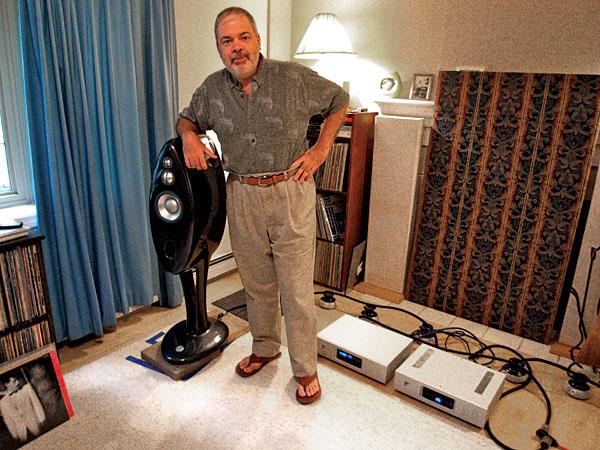| Columns Retired Columns & Blogs |
The Fifth Element #64

But first some new music. In his excellent liner notes for Polyphonic Dialogues, his new disc of music by Dmitri Shostakovich and Rodion Shchedrin (SACD/CD, 2L 2L63), pianist Joachim Kwetzinsky recounts two exchanges between the composers. The first took place in 1965, when both were vacationing in Armenia. Shostakovich asked Shchedrin the Desert Island Score question: Were Shchedrin to be exiled to a deserted island and could bring only one score with him, which would it be? Shchedrin's answer was prompt: J.S. Bach's Die Kunst der Fuge.
When Shchedrin then turned the question on him, Shostakovich answered, "Das Lied von der Erde, by Mahler." Which is not surprising, given that Shostakovich was a founding member (one of two, if I recall correctly) of the Gustav Mahler Society of the Soviet Union, and that he later entertained (but decided against) the idea of completing the orchestration of Mahler's unfinished Symphony 10. (The only books in Mahler's composing hut were Johann Nikolaus Forkel's major survey of Bach's works.)
The other exchange between Shostakovich and Shchedrin took place in 1975, two months before Shostakovich died. Shchedrin asked, "Do you remember our conversation in Armenia? Did you change your opinion about Mahler?" "No," Shostakovich replied. "And did you change your opinion about Bach?" To which Shchedrin answered, "No."
In 1950, Shostakovich (b. 1906) attended events in Leipzig commemorating the 200th anniversary of the death of J.S. Bach, which prompted him to compose his own 24 preludes and fugues for piano, in honor of Bach's Well-Tempered Clavier. Shostakovich's work in turn inspired the younger Shchedrin (b. 1932) to write his own set. Shchedrin completed the sharp keys in 1964, the flat keys in 1970.

To oversimplify, Shostakovich's work has at its center melody (for example, the almost music-box feeling of the Fugue No.7 in A), while in Shchedrin's work rhythm takes that role. Furthermore, when Shostakovich wrote, the prevailing (read: enforced) musical orthodoxy in the USSR was conservative and anti-experimental, whereas Shchedrin himself played a decisive role in convincing the authorities to permit such techniques as 12-tone composition. To oversimplify again, Shostakovich was something of a reluctant classicist, Shchedrin a cautious eclecticist. So while they shared much common ground, there are illuminating contrasts.
Shostakovich's Op.87 Preludes and Fugues have entered the standard repertory in the West—Keith Jarrett's praiseworthy 1992 version (ECM New Series 1469/70; see www.stereophile.com/recordingofthemonth/1292rotm) is proof of this—but Shchedrin's are almost unknown. As is almost all of Shchedrin's music, except for a handful of ballet scores, his Carmen paraphrase being the best known.
Joachim Kwetzinsky is a young (b. 1978) Norwegian pianist for whom technical difficulties appear not to exist, and who, more important, has a keen musical intelligence. I find the programming of this recording particularly admirable. Kwetzinsky interleaves four pairs of Shchedrin's preludes and fugues with three pairs of Shostakovich's preludes and fugues. The first and last words, however, go to Shchedrin. The disc opens with his jazzy Basso Ostinato, from Two Polyphonic Pieces (1961), and closes with Toccatina-Collage, from Polyphonic Notebook (1972). Nor, at a total of 64 minutes, does the music wear out its welcome. This is, without question, "cerebral" music, though there are moments of lightheartedness, even humor. Great late-night listening. (Road music, perhaps not so much.)
As we have become accustomed to hearing from—or being spoiled by—2L, the sound is excellent from both the CD and SACD layers. The piano is a Steinway, and the recording venue was the Sofienberg Church. Highly recommended, especially if you're a bit weary of SACDs that are historical reissues or new recordings of warhorse repertory, and are looking for adventurous but musically solid performances recorded in native high resolution. SACD fans, it's time to vote with your wallets. Again.
- Log in or register to post comments




































